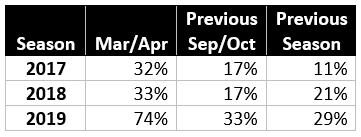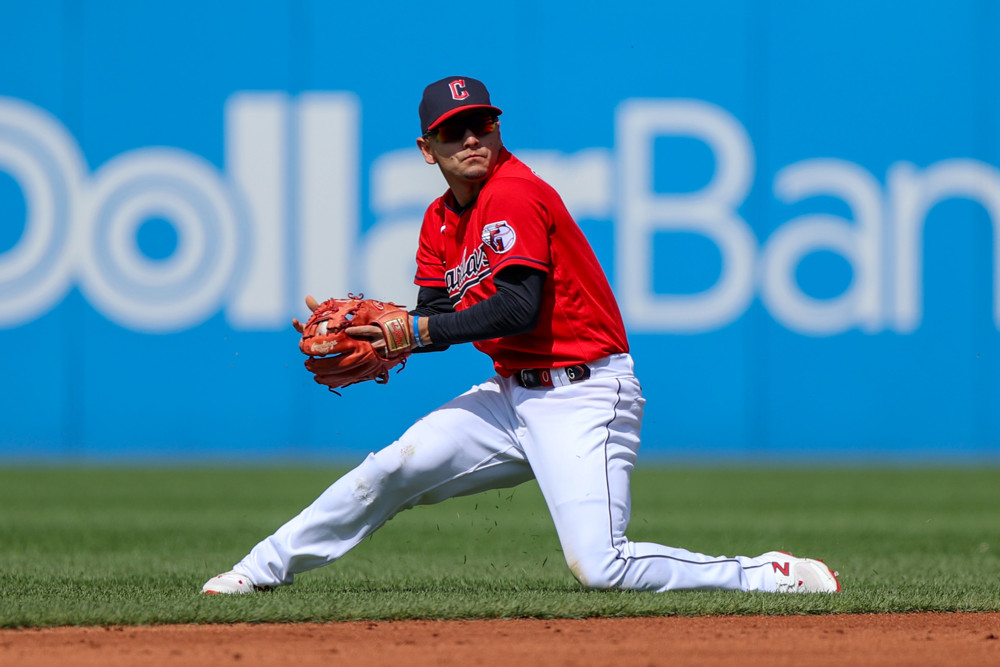BY ALEX VIGDERMAN
The NL East might have been the buzziest division in baseball over the offseason, with every team making big trades and/or signings. You know all that because you’ve been paying attention. You’re reading this blog after all.
The Marlins’ primary buzz surrounded their pursuit of offloading J.T. Realmuto, so once that was done all the NL East attention went back to the four teams jockeying for position at the top.
What if I told you that the Marlins are on pace to use infield shifts on balls in play more than any team in history? How about over 1,000 more times than the next-closest team?
Well, first you’d say stop playing the on-pace game. But next you’d probably say, “Really? The Marlins?”
(As should come with any April baseball article, all small sample caveats apply to the following paragraphs.)
The Marlins had 78 shifts on balls in play in their series against the Rockies. That’s a pace of 3,159 for the season.
Remember that the prorated numbers are particularly silly this early. But to use that many shifts is a pretty crazy start to the season. The shiftiest teams on record recorded totals in the 1,800’s.
In fact, this year’s Marlins team shifted on 73 of its first hundred balls in play, which outpaces any team on record (the 2017 Angels had 65).
Perhaps just as interesting, Miami has really committed to full shifts (the traditional three-to-one-side version). Since the start of 2018, the league as a whole has favored full shifts to partial shifts (two on each side but with a noticeable shift in positioning), but only slightly.
This runs counter to what BIS has recommended many times in the past, which is that partial shifts are not nearly as effective. Over the last four-plus seasons (quite a large sample), groundballs and short line drives hit into full shifts have a .222 batting average, compared to .274 with partial shifts.
Bucking the league trend, 61 of the Marlins’ 73 shifts mentioned above were full shifts. That’s 12 more than any team has ever used in their first hundred balls in play.
So what gives? It’s not like the Marlins’ opponent this past weekend, the Rockies, is chock full of shift candidates. Current Rockies hitters combined to be shifted on just 23 percent of their balls in play last season, eighth-fewest in MLB.
It turns out this has been a bit of an M.O. for the Marlins the last few seasons. In each of 2017, 2018, and (as of now) 2019, they have increased their shift rate substantially to start the season. Compared to their shift rates in both the previous season as a whole and just the last month of the previous season, they’ve added 10 percentage points or more each April the last three years. They’re the only team to do that.
Marlins Shift Percentage on Balls In Play
(March/April vs. Previous Seasons)

As you might notice from this table, though, even with substantial upticks in shifting to start each season, they’ve ended up with much lower rates by the end of the season. In 2018, for example, they shifted on 33 percent of their balls in play through April, but ended up at 29 percent (meaning they were below that from May on).
Should we expect anything like this going forward? Of course not. Given that annual trend, it’s probably fair to assume that the Marlins aren’t going to blow away shift records and single-handedly bring the league to ban the shift or anything like that.
That’s especially true if their performance with shifts doesn’t improve. Thus far they have zero Shift Runs Saved, which measures shift effectiveness compared to an average defense. Considering the volume with which they’ve shifted, that’s not great.
The big trouble with their performance in the shift is that the players are botching plays where the shift might otherwise have been successful. The Marlins have committed nine Defensive Misplays or Errors with the shift on, six more than any other team (acknowledging that they also have more shifts than anyone).
The Phillies had a similar situation last year when their shifts were being criticized (Andrew Kyne wrote about it last spring). The shift can only help so much when the fielders don’t complete the plays presented to them. Philadelphia saw substantial improvement in their performance over the second half of 2018, so it’s fair to assume that the Marlins will get more out of their shifts going forward as well.
Obviously this is a wait-and-see situation. But given how outlandishly aggressive Miami has been in shifting so far, it will be very interesting to see how they follow up against the Mets this week.



